Spider mite control agents, biological enemies of the pest
If microscopic gluttonous spiders are bred in the garden or on indoor flowers, you should urgently look for a spider mite remedy before your plants die. The insect is very mobile, and if you miss the time, all green pets will be entangled in threads that are almost invisible to the eye. Even if you save all the bushes, the appearance of yellow leaves covered with dark dots will not beautify the interior. The cut fragments will take a long time to recover. To prevent the room's design from being damaged, declare war on the pest at the first suspicion of its appearance.
How to recognize a spider mite?
You can often hear the phrase: you need to know the pest by sight. In the case of a spider mite, it is difficult to follow this advice. An adult insect does not exceed 0.5 mm, eggs are much smaller. It is not known why the pest was given such a name, because it is not a tick, but a microscopic spider. It is green or brown in summer and turns red in winter. The entire life cycle of an individual is no more than a month, but before death the female manages to lay up to 150 eggs.
Insects live on the inner surface of the leaves and often go unnoticed until the bush itself, with its unhealthy appearance, tells the owners that a problem has arisen. Brown or white dots appear on the leaf plates, the thinnest cobwebs stretch from leaf to leaf. The insect's favorite living conditions are temperatures from 20 to 30⁰C, air humidity about 40%. On the street, the active period begins in June: insects mate, give birth to offspring. In August, they are looking for a secluded place underground in various cracks and cracks in building structures. There, insects hibernate, and with the onset of warm days they again begin to spoil the plants.
Do not try to starve the tick, its vitality is very high. When unfavorable conditions occur, the pest hibernates and can spend a long time without food or drink. The masonry remains viable for up to 5 years. If you keep a pot of contaminated soil in the cold for 2 winters, and then plant a flower in it, larvae will still hatch from the eggs, which will later turn into adult insects.
In search of food, ticks can very quickly crawl from flower to flower. If the distance between plants is very large, the pest travels on human clothing or animal hair, on the thinnest cobweb it flies through the air to a new place.
Ticks live in colonies and multiply very quickly. Up to 20 generations of new pests can appear from one female per season. Larvae and adults feed on plant sap. They pierce the leaf with their proboscis and drink the nutritious liquid. A white spot is formed at the site of the wound, which is unable to produce chlorophyll. If there is a lot of damage, the leaf loses moisture and begins to dry. Infection penetrates the punctures, the plant becomes ill and dies.
What does a spider mite like?
It is difficult to name a plant that does not suit the taste of a spider mite. Most of all he loves cucumbers, but does not disdain other melons, legumes, tomatoes, eggplants and any vegetables. If there are no plantings in the garden, the pest attacks weeds. The colony will breed on unharvested grass and, when you plant cucumbers in open ground, it will pounce on your favorite delicacy with all its mass.
In the garden, the tick attacks fruit trees and bushes. If there are no fruit or berry crops, ornamental shrubs and hedges will do.Each type of insect has its own favorite plants, but in the absence of the necessary crops, they will settle on any tree, shrub or grass. In the spring, before the leaves begin to blossom, inspect all fruit trees and bushes. If you see deformed kidneys, know: a spider mite has wound up in them.
In a warm apartment, a tick can attack any houseplant. Especially loves the pest of roses, dieffenbachia, decorative citruses. If you do not notice the pest in time, it can destroy all the green interior decor. First of all, weak and diseased plants that are in shaded corners suffer. Ticks do not like ultraviolet rays - in the summer try to open windows, take flowers out into the air. The bushes will become stronger and healthier from the sun, and insects will try to move to a more favorable place for them.
Advice
Purchase an ultraviolet lamp and periodically irradiate the plants on the windowsill and in the greenhouse. Light the leaves both above and below so that the ultraviolet light drives the pest away.
How to save infected plants?
Every living organism in nature has natural enemies. For the destruction of spider mites in closed rooms, the phytoseiulus insect can be used, which eats both adults and larvae. You can get a predator in the biolaboratory. This species does not pose any danger to either humans or plants. When the pests are destroyed, the predator colony will simply die out from lack of food.
A spider mite requires a long and stubborn struggle; not every drug can penetrate through the fine mesh to its body. Although it is called an insect, in fact, this pest belongs to the arachnids. Conventional insecticides may not work on it; special means are needed. In addition, most of the toxins do not act on the eggs of the tick, and in order to destroy the new generation, the spraying should be repeated after a week.
To combat the pest, it is recommended to use:
- "Bitoxibacillin";
- Akarin;
- Fitoverm;
- "Plant-Pin";
- Actellik;
- Apollo.
The hormonal drugs "Clofentesin" and "Flufenzin" do not kill ticks, but sterilize females, after which the female cannot reproduce. The effect will not be noticeable immediately, after a while the existing ticks will die out from old age, and the new generation will not appear. For indoor flowers, a very convenient remedy against the colony of ticks - "Plant-Pin". Stick special sticks into the ground, after a few days toxins will enter all plant tissues through the roots. Having drunk the poisonous juice, the pests will die.
The choice of a product largely depends on whether the vegetable or ornamental crop needs protection. If no part of the plant is eaten, toxins that accumulate in the tissues can be used. When processing vegetable and fruit plantations, the waiting time from spraying to harvesting should be considered. Some formulations can only be sprayed outdoors; indoor use is prohibited. Read the instructions carefully and follow all precautions so that the tick, and not your family members, is affected by the poison.
Advice
If you are going to use any parts of a houseplant for food or for preparing a medicine, look in the instructions for how long after processing you can harvest.
The spider mite's viability is very high. If the pest survived the spraying, it will learn to develop an antidote to the already familiar toxin. Usually, sulfur or phosphorus-based preparations are used to control spiders. Alternate between different active ingredients, only in this case you can achieve the effect.
Flowers need hygiene too
If the bush is already covered with cobwebs, it will be difficult to save it. Try to catch the infection at the very beginning, while there are still few visible signs.If a flower is very badly affected, it is better to destroy it in order to protect other specimens from infection. According to the law of harm, this often happens with the most valuable and rare plant. You can try to cure the flower, but for this you need to transfer it to another room so that the tick does not spread to other plantings. To work with a diseased flower, select a special gown, gloves and tools that must be washed frequently in a soapy solution.
Many have noticed that a neat housewife rarely gets sick or damaged by insects. There is nothing surprising in this: a good hygienic environment is useful not only for people, but also for their green pets. If ficus leaves turn gray from dust, ticks will gladly settle on dirty greenery. A bed overgrown with weeds will prepare an additional table and a house for the pests. A plant weakened by poor care will not be able to give a decent rebuff to its natural enemies.
It is easier to deal with spider mites that have settled on a flower with hard shiny leaves. Such species need to periodically arrange a "bath day". Cut off the damaged fragments and burn them. Wash each sheet with a sponge and a solution of laundry soap. Do not forget to wipe the underside of the leaf plate - this is where the pest colony lives.
Ticks are good at hiding, they can crawl into cracks in window frames, under peeling paint. Treat the window sill, binders and slopes with soap or alcohol solution. Remove and wash curtains. Pests do not like high air humidity - install a decorative fountain or a composition of boulders, pebbles and moss on the windowsill, and do not forget to water it periodically.
Folk remedies for pest control
Mites do not tolerate onion and garlic odors. You can spray indoor plants with infusion, but there are flowers for which splashing on leaves and buds is detrimental. Cut an onion or a few cloves of garlic into slices, place on the ground around the flower and cover the pot with a plastic bag. After a few days, remove the film - the fumes will destroy the pests and their larvae. Instead of onions and garlic, you can put a small container of turpentine in the pot.
Both at home and in the beds, you can use folk remedies for spider mites. Spraying with cold water helps a lot. In the morning, shower plants that are safe from the water droplets on the leaves.
You can use other methods of control without the use of chemical toxins.
- Pour 150 g of chopped garlic into 1 liter of water, let it brew for 6 hours. For spraying, add a tablespoon of the infusion per liter of water.
- Place 20 g of dandelion roots in 1 liter of warm water. The spray infusion will be ready in 2 hours.
- Place 1 kg of dry yarrow in a bucket of boiling water, leave for 3 days. Before spraying, dilute in the infusion 4 tbsp. spoons of soap shavings.
Hard leathery leaves can be wiped with a cotton swab dipped in alcohol or vodka. This must be done quickly so that the composition immediately evaporates and does not have time to burn the leaves. For training, select a small fragment and see if such a procedure will damage the flower. Mechanically, you can destroy the bulk of adult pests and larvae - wipe the leaves with alcohol or soapy water once a week. One struggle with folk remedies rarely gives a result, it is advisable to use an integrated approach: chemistry, natural preparations, prevention.
It is very difficult to spot single individuals of the spider mite, and when the colony grows to a large size, it is not always possible to save the plants. To prevent the tick from spreading, take preventive measures: keep each new plant in quarantine for a couple of weeks, calcine the soil for filling and transplanting in the oven. The pest loves to live with sloppy owners in beds overgrown with weeds and houseplants covered with a layer of dust.Do not create favorable conditions for him, and your plantings will always be strong and healthy.
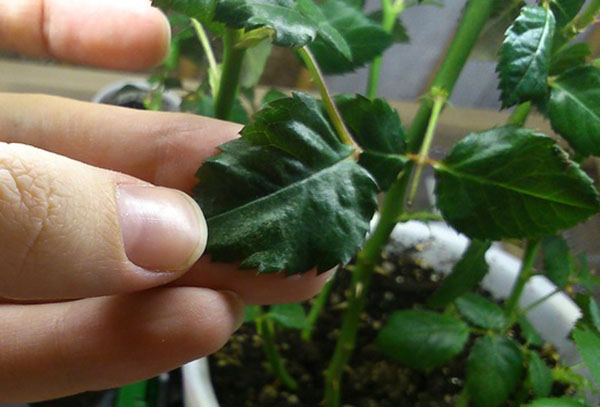
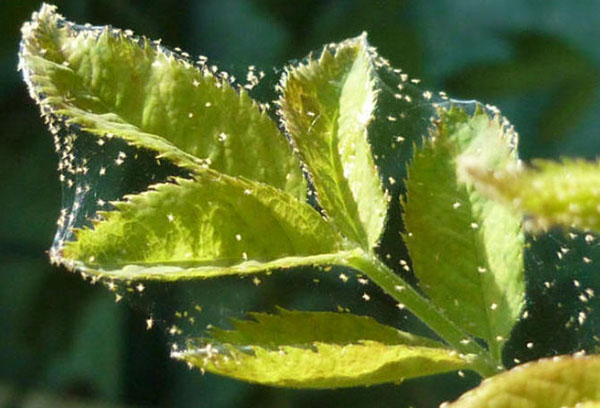
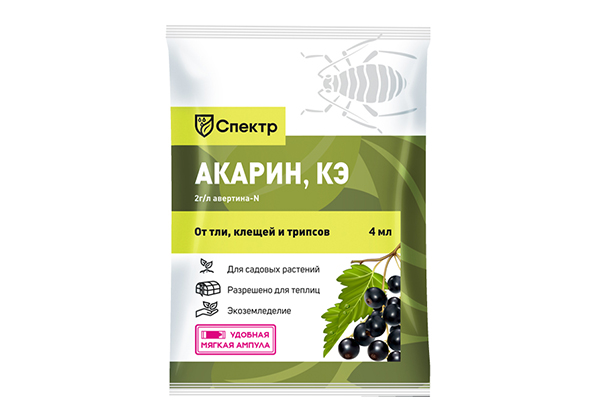

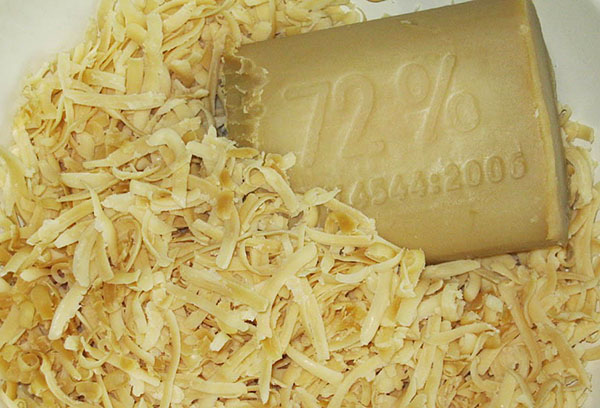


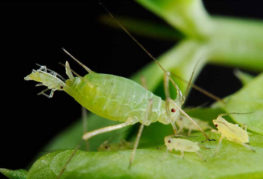
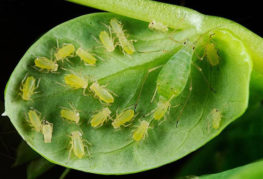
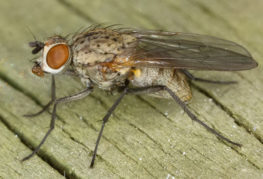
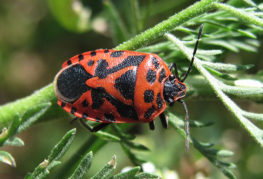
and will be published shortly.